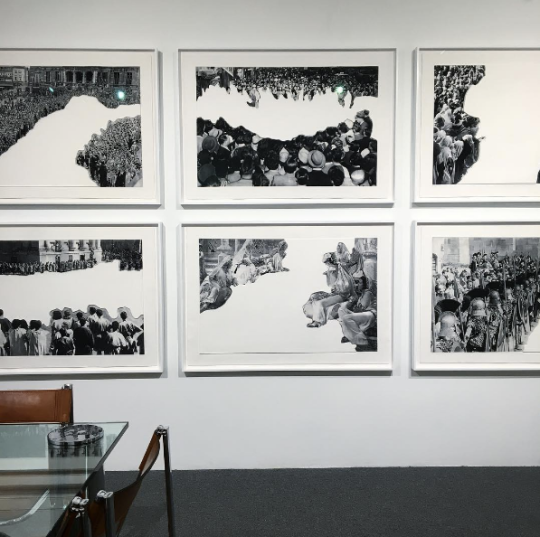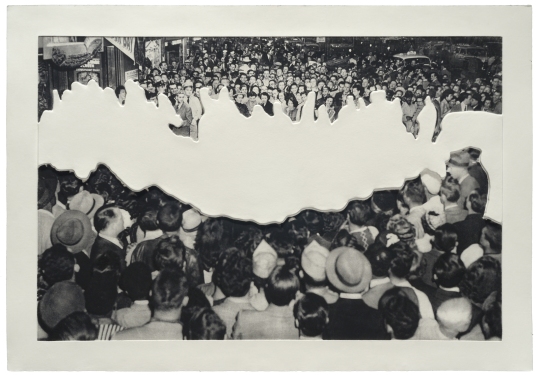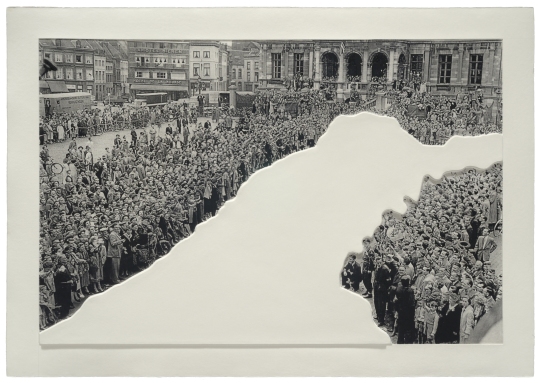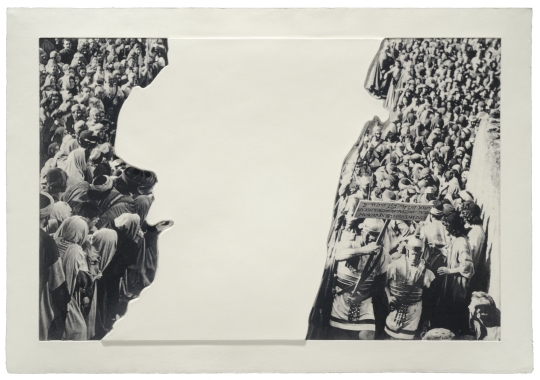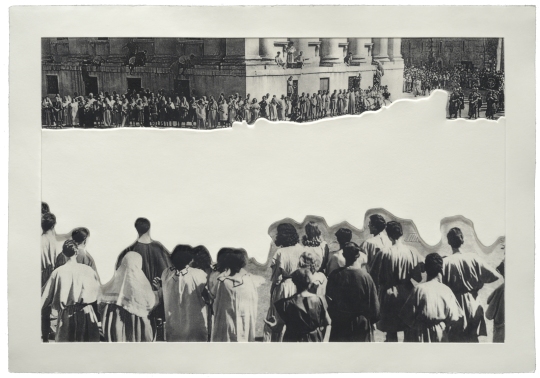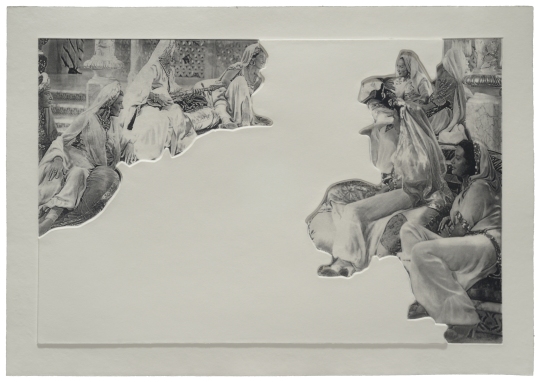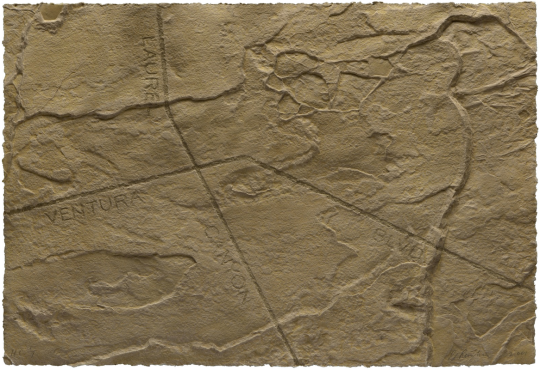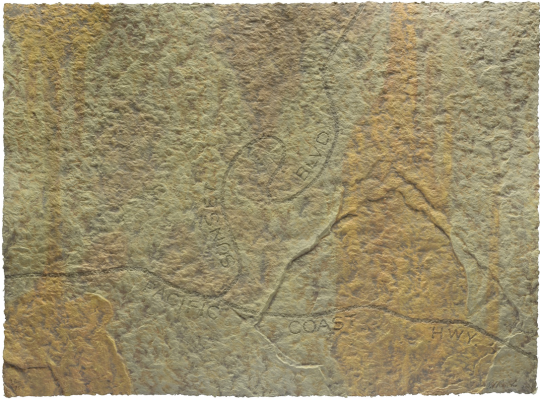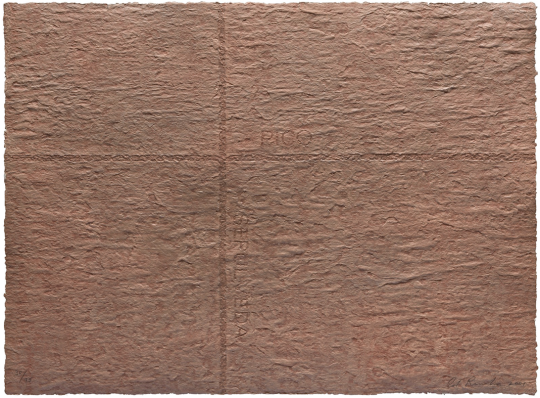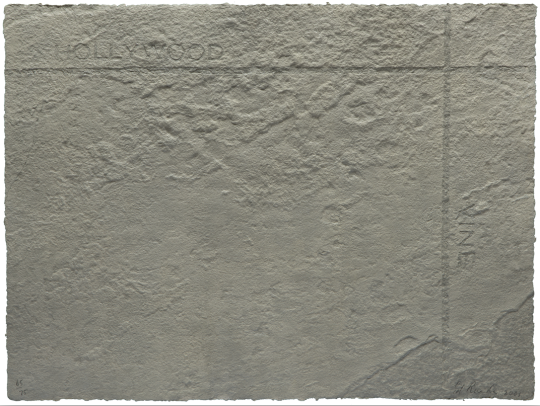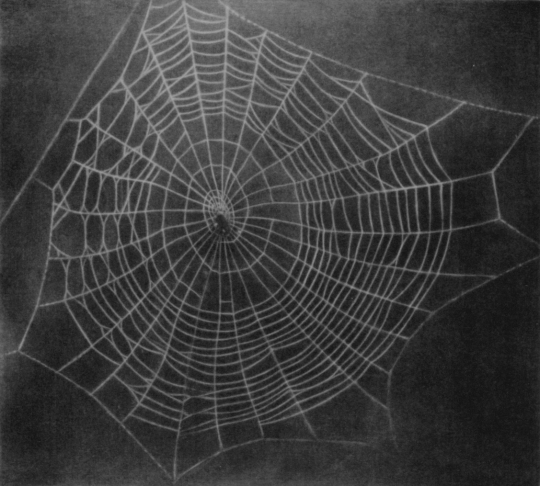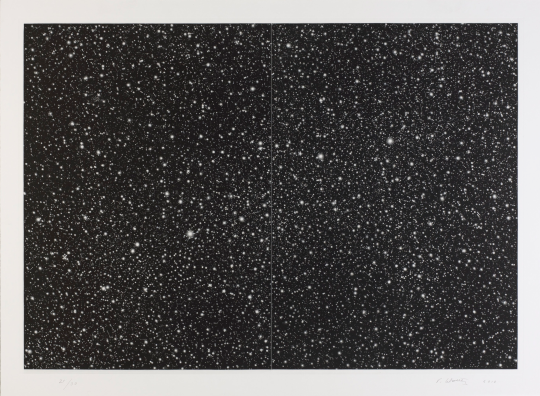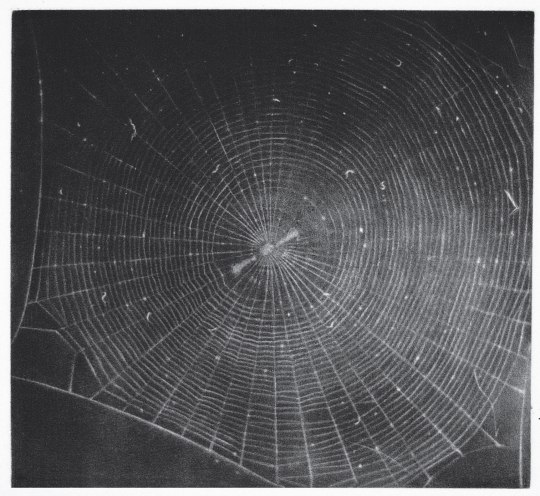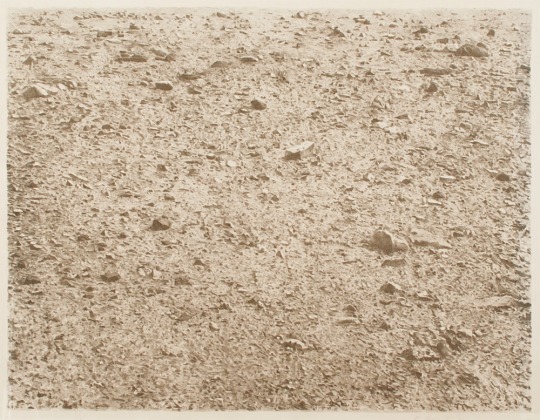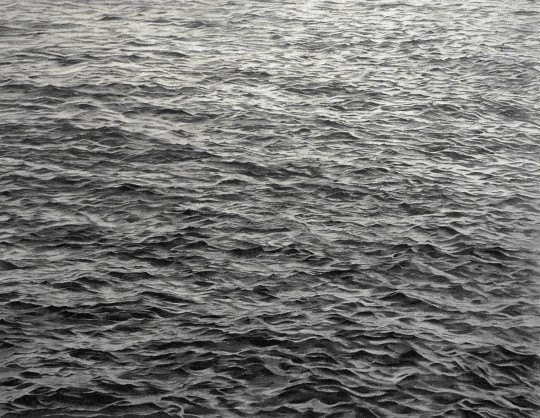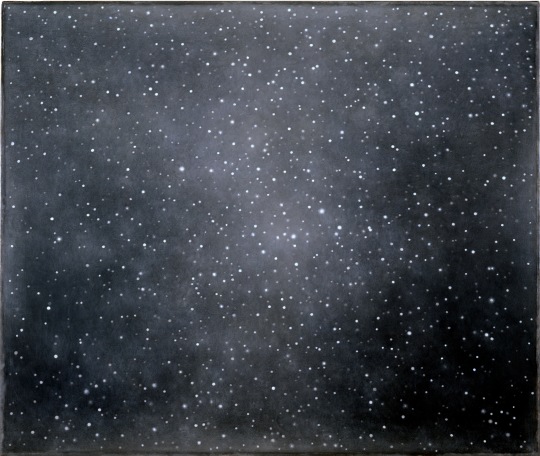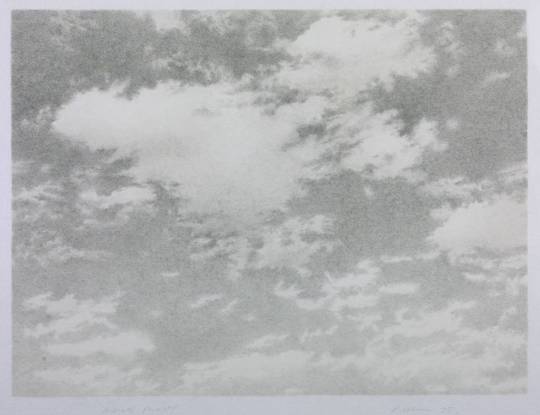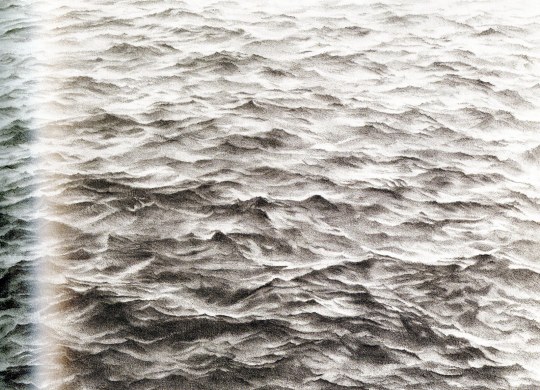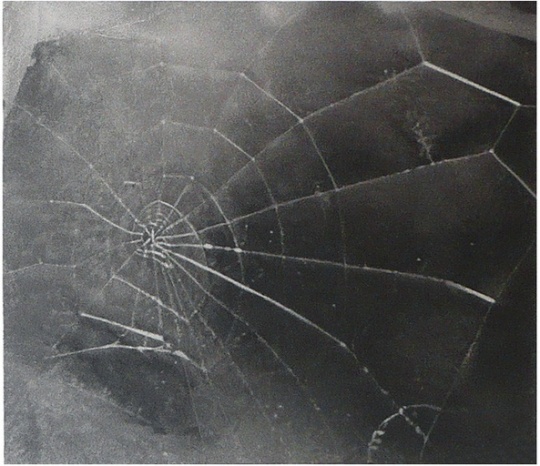Ruscha’s Rusty Signs (2014)
Made from a single piece of paper, Ed Ruscha’s Rusty Signs (2014) appear to have been rusted and weathered, reading as actual patinated metals. These remarkably realistic works draw upon motifs consistent with the artist’s career: components of visual culture, the passage of time, and Americanisms. Filtered through the language of common objects, the prints read DEAD END, CASH FOR TOOLS, and FOR SALE 17 ACRES in multiple iterations, as if they came from different locations, subjected to a different set of circumstances, with strikingly naturalistic gunshots and thick layers of rust and grime. In keeping with the course of his career, Ruscha is not merely representing the image of the sign as he has in the past through his paintings and photographs of signage but actually here recreates the sign itself.






